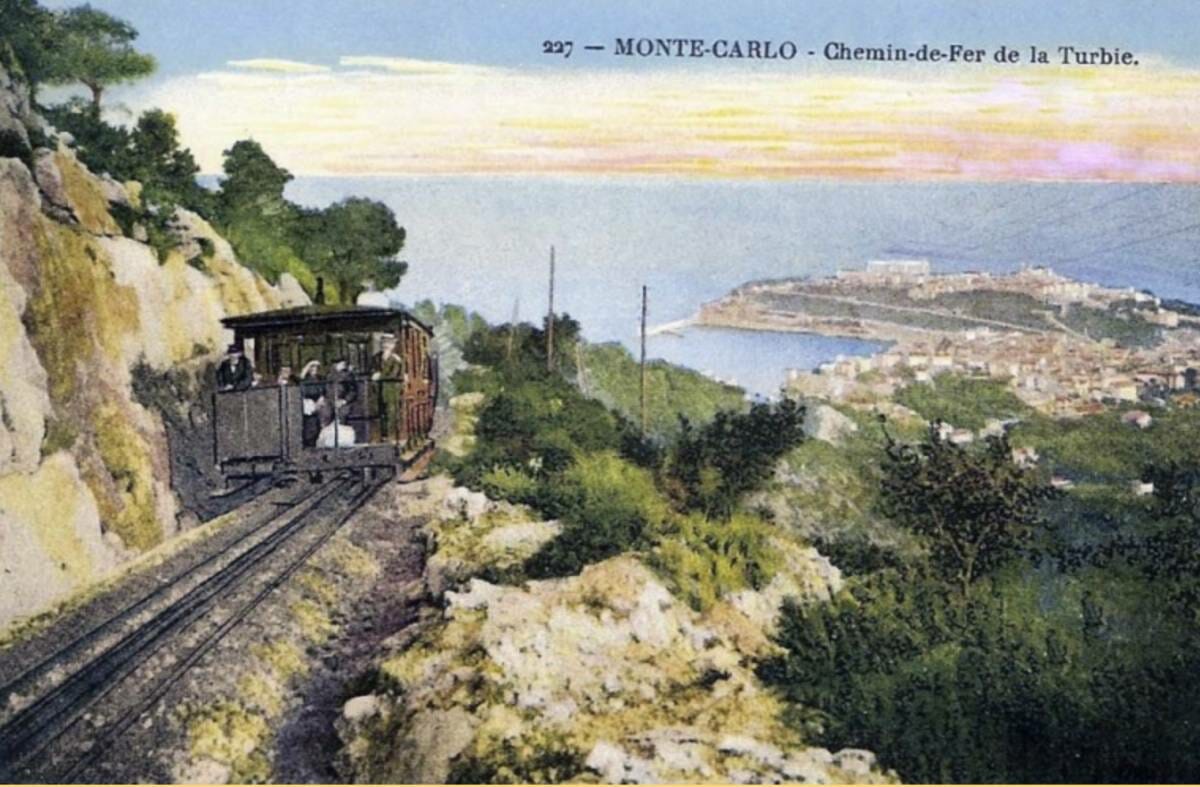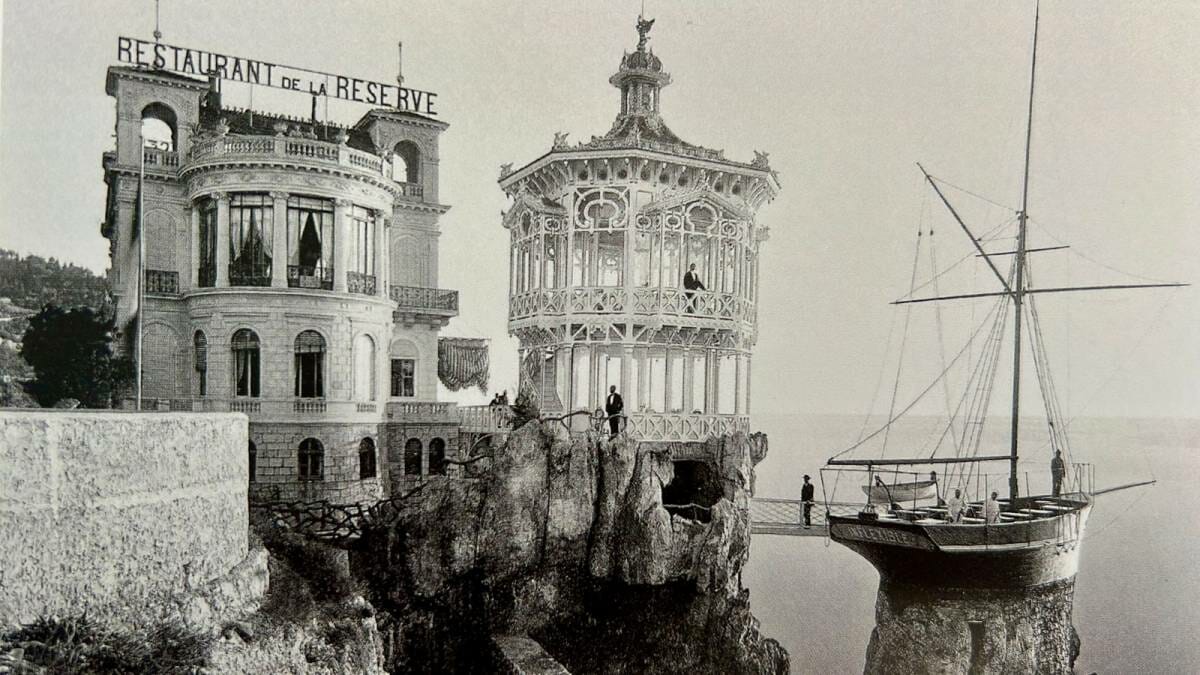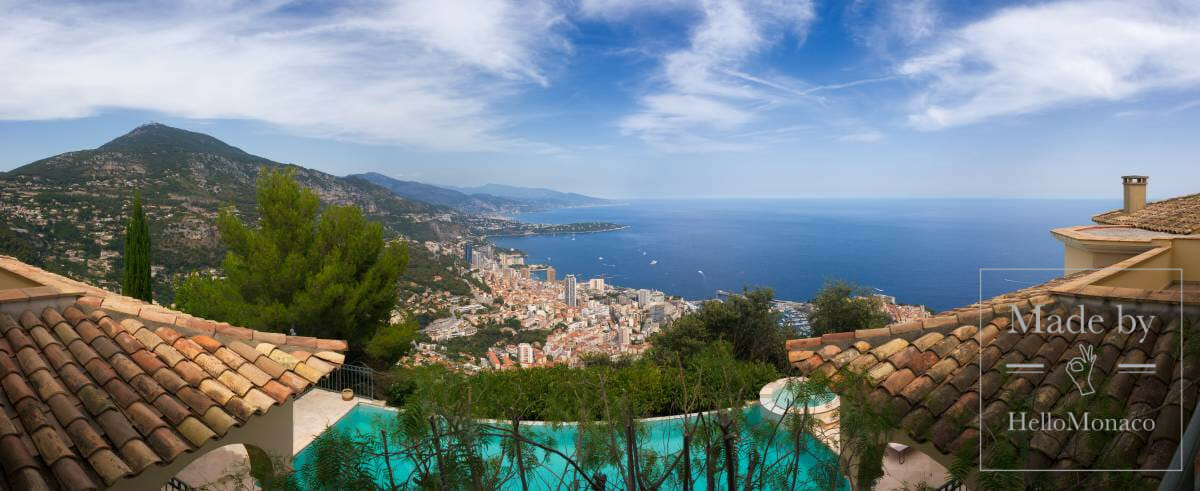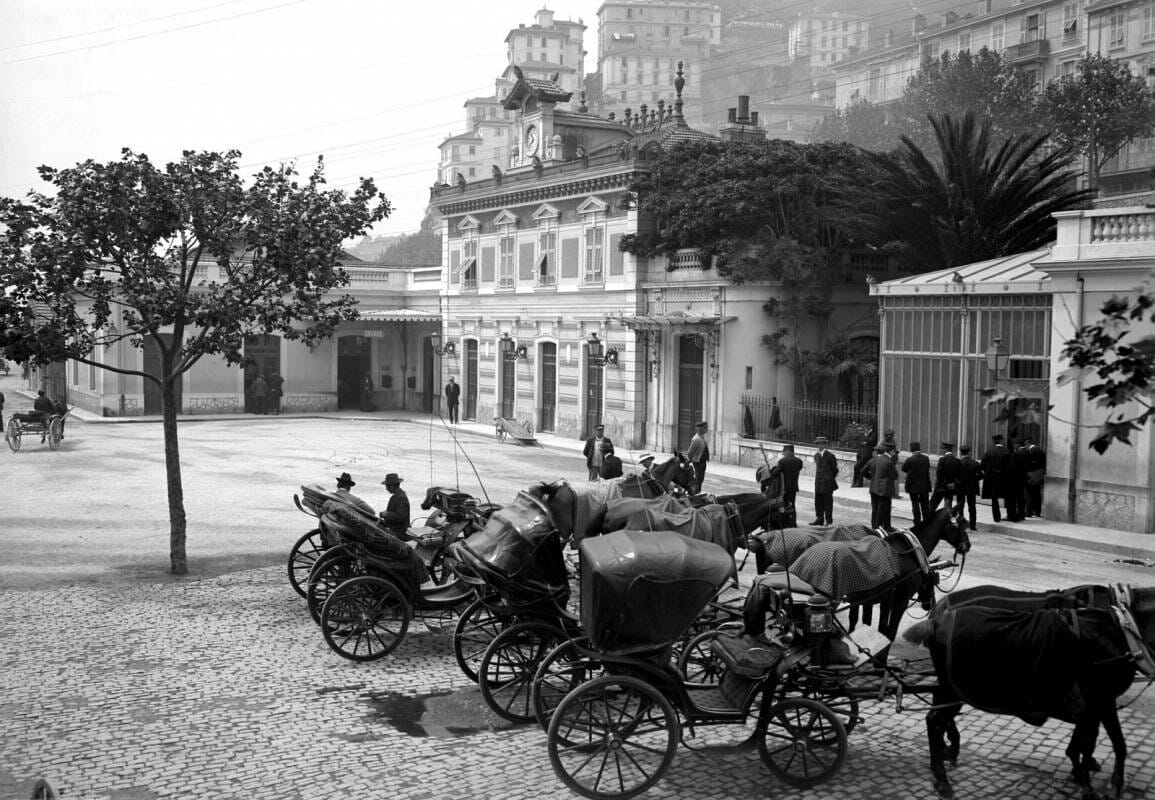They once were an integral part of the French Riviera landscape. Today, the memory of these historically significant sites is immortalized only in photographs. Discover this fascinating history of disappearance around the Côte d’Azur with HelloMonaco.
Le Palais des Beaux-Arts and Sporting d’Hiver in Monaco
A stunning building Palais des Beaux-Arts was inaugurated in 1893. Symbol of Belle Époque luxury, it was emblematic of the Principality itself. It was demolished in 1930.

The 30s were a profitable time for the construction of entertainment venues. The Place du Casino gained a new show venue in 1932: the Sporting d’Hiver. The building, constructed on the site of the glass Palais des Beaux-Arts, rose spectacularly over the Boulingrins gardens and became a must for nights out in Monaco. The customers who frequented its gaming rooms were the elite. Run like an English club, the Sporting was only open to members. It was also home to a restaurant and nightclub whose customers applauded the ‘Girls of Monte-Carlo’.

In recent years, the Sporting d’Hiver was home to a cinema, SBM offices, and stores. That Art Deco building was subsequently torn down in 2015 to make way for One Monte-Carlo.
Sporting d’Eté in Monaco
In 1931, the colonial-style Sporting d’Eté was built on the seafront. It hosted the best shows of the season and offered spectators magical fireworks displays. In 1974 the new Monte-Carlo Sporting, also known as Sporting d’été, was built on the Larvotto extension and replaced the old one. It includes the Salle des Etoiles, a concert hall, and it is the main venue for society fundraisers in Monaco. Joséphine Baker was the star of the opening gala.

Monaco’s Mills
Today the mills that once existed in Monaco are part of history. Only two places in the Principality serve as a reminder of the time when they were one of the pillars of Monaco’s economy. You might easily guess that we are talking about Place des Moulins and Boulevard des Moulins.
In the 18th century you would have encountered about eight mills within the territory of Monaco. All of them were of great importance for Monegasques, since they were used for the production of flour and olive oil. The mills were run by the communes, and the oil producers had to pay a tax to rent the mills. It is worth mentioning that the Monegasque olive oil producers had a very good reputation and even excelled at the Exposition Universelle of 1900 in Paris, having won a gold medal for the quality of their products.
A century and a half ago, the Principality was making big profits from the export of olive oil and lemons. For example, from 1731 to 1800, more than 2,100 Monegasque ships brought to Marseille about 7 million litres of oil. This activity continued until the beginning of the 20th century.
The location of the mills might seem obvious: Boulevard des Moulins is surely not named after the mills for no reason! But the truth is the boulevard is not directly related to the mills. Most likely, it simply served as a road leading to the mills situated on the territory of the current district of Fontvieille.
Claude Vaccarezza, lawyer and historian who worked within the government of Monaco, managed to pinpoint the exact location of only one of them — La Marra situated where the Trocadéro residence now stands. The mill disappeared as late as 1961 and was the only one to resist urbanization.

La Marra was a double mill. The upper floor was used for grinding flour, the lower level was intended for oil production. Today, you can find them in the garden next to Saint-Nicolas Church (Eglise Saint-Nicolas). Its main functioning parts have been preserved. There you can see the remains which include a millstone and a stone trough for draining oil.
Viaduct in Monaco
In the early 20th century you could see the railway passing over the Sainte Devote church. Its construction began in 1864 after Napoleon III signed an agreement with Prince Charles III on the extension of the Paris-Lyon-Mediterranean railway to Menton. Four years after the work began, the first train passed through the Principality. At that time the station was located at the entrance to Monaco, on the place of the current Avenue Prince-Pierre and the Promenade Honoré II.

In 1964, the viaduct was demolished, and in its place a bridge was built, which can still be seen today. In the course of large-scale construction works, the rail tracks were installed in a tunnel in the rock.
Rack railway between Monaco and La Turbie
At the end of the 19th century, the link La Turbie — Monaco was made by a network of paths that were difficult to walk. With the development of tourism in the Belle Epoque, it was necessary to find a comfortable and quick solution to bring the rich clientele to the village: the rack railway was therefore inaugurated on 10 February 1894.
The locomotive made the 2.5 km journey several times a day at 7 km/h on a one-metre wide track. The funicular consisted of a locomotive and a single wagon, divided into first and second class. The project cost was estimated at 1,400,000 francs.

The line was closed in 1932 after an accident. On March 8, 1932, the first morning train left Monaco at 8:25 am with a passenger car and locomotive No. 1 in good order. During the time the train was travelling the first 200 metres, the speed was relatively slow. It was then that the column set off again along the full slope to develop a speed of 80 km/h. The driver, who was at the end of the column, was ejected during the manual braking of the car. Thus, mechanic François Tansini finds himself on his own to stop the drifting convoy. He will try to maneuver the wagon and the locomotive brakes to the end. On the way, a passenger jumps, the second dies of a head injury. The last three, stranded in the car that will eventually derail at the hammer of the Monte-Carlo train station, will be saved with a few injuries. The mechanic will die at the helm of the derailed locomotive which ran aground in the wall of the station.

The firemen of the Principality will quickly rescue the wounded. Traffic will be interrupted for the whole day and will never resume.
The investigation will show that the pinion holding the rack and pinion of the locomotive broke and may have been the main cause of this accident.

Casino Jetée-Promenade in Nice
Perhaps, this is one of the most mysterious spots on the Côte d’Azur with an interesting history. The idea to build a casino came from Marquis Espouy de Saint-Paul during his trip to England, where he discovered the Crystal Palace, a true masterpiece of architecture made from glass and metal. Marquis, residing in Nice, wanted to create something similar in his city. Having expressed the idea to local authorities, he received a building permit. The space of 6 500 sq. metres including a casino, a concert hall and a restaurant was supposed to attract tourists all year round, especially in winter.

The grand opening of the casino was planned for April 1883. By this time, a whole complex with a dome reaching 25 metres in height had already been built in the sea. However, the day before the opening a fire destroyed most of the building. Rumour had it that it was an arson attack, forcing a delay in the opening of the Jetée-Promenade casino in favour of the Municipal gambling house built by the Mayor of Nice.

Finally, in 1891, the casino which connected to the Promenade des Anglais with a 60-metre bridge opened its doors to visitors, offering the tourists different activities — from simple walks to musical performances.
After World War II, the casino building was in a very poor condition. The German army, plundered the “pearl” of Nice and used parts of the building as scrap metal. And so after the war, it was decided not to restore the building, which by that time had vanished.

building. From “La Casino de la Jetée – Promenade“ book by Jean – Paul Potron, Editions Giletta
Hotel Ruhl in Nice
When you are in Nice, walk down the Promenade des Anglais and take a look at the hotel Le Méridien. In its place there used to be a twin of the famous Negresco. Hotel Ruhl with its neoclassical architecture was built in 1913 and thanks to its convenient location close to the Casino Jetée-Promenade and the Palais de la Méditerranée, it attracted wealthy customers.

The place bore the name of Henri Ruhl, a British businessman of Swiss origin, who had made a fortune in the hotel industry. In the list of his acquisitions you might have found the Carlton in Cannes, Biarritz and Paris, Le Royal in Nice and several hotels in different cities of France. After World War II, the hotel’s profits diminished. In 1970, the building was demolished and in its place a new hotel and a casino were built.
La Réserve in Nice
In the second half of the 19th century, a small restaurant on the waterfront existed which was visited by tourists and local residents. However, the place became a real success in 1876 after the opening of a much larger Italian-style restaurant. Located on the edge of the cliff, it also included a sailboat-shaped terrace, which, unfortunately, has been replaced by modern construction.

Casino Municipal in Cannes
Before the world-famous Palais des Festivals, located at the very beginning of the Croisette, was built, residents and tourists of Cannes could see the majestic casino building inaugurated in 1907. Later, in 1946, the first Cannes Film Festival was held here. By this time, the gambling house was quite popular among the locals and tourists, and there were never-ending parties here. The casino building disappeared from the map in 1979. In its place the legendary Palais des Festivals was built.










